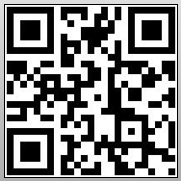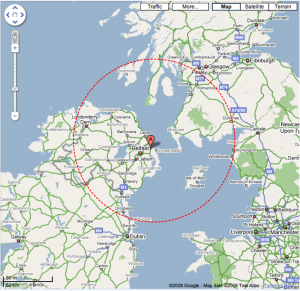Mike Elgan at ComputerWorld gives software developers the chills worldwide as he describes ‘virtual sticky notes’: Researchers at a variety of labs, at both universities and private companies, are working on technology that enables people to create messages and associate them with a specific location. Those pursuing leadership in this technology include Microsoft, Siemens, Cornell … Continue reading “Virtual Notes”
Mike Elgan at ComputerWorld gives software developers the chills worldwide as he describes ‘virtual sticky notes’:
Researchers at a variety of labs, at both universities and private companies, are working on technology that enables people to create messages and associate them with a specific location. Those pursuing leadership in this technology include Microsoft, Siemens, Cornell University, the University of Edinburgh and now in the news this week: Duke University.
…
“Virtual sticky notes” are messages and other content that people can’t read unless they’re standing in the right spot. The idea is that a phone’s GPS determines the location for both poster and readers. The concept turns the physical world into a kind of 3-D Internet.
It’s not just the big companies, there are half a dozen lone developers and micro-ISVs who are working on something similar.
The moment I heard about the Core Location possibilities in the iPhone, the moment I realised how big this was going to be. Location-Services are going to be the hit technology of the next eighteen months. And if you don’t believe me, well…you’re an idiot. Geeks have been lusting after a reliable match-up between virtual space (cyberspace, whatever) and meatspace (the real world) for decades (I first read about it in 1993 in a roleplaying game so you can appreciate how long geeks have been wanting this). Now we have devices with GPS and internet capabilities that will allow that to happen.
Mike describes some scenarios such as writing a restaurant review after stepping out of a restaurant and posting it to the the ‘Virtual Note’ server which can be retrieved by the next person who stands there and opens the ‘Virtual Note’ application.
Whether this is used for private messaging or public messaging, it’s also open to abuse. Rather than phone booths containing cards for illicit services (admittedly I’ve not seen these in Belfast), you might end up with virtual notes which only really occupy virtual space and not meatspace. What’s to stop and unscrupuluous business owner or advertiser from swamping a competitor’s physical location with bad reviews? What’s to stop criminals from leaving an enticing breadcrumb trail that brings our curious geeks into a mugging incident because the criminals know they have some saleable technology with them.
Worse still, we’re talking about virtual overlays of the real world here so places that are heavily visited will become swamped with messages; both personal and commercial, public and private.
This is why exclusivity might be needed. We need to be able to segregate this traffic so that we only see the traffic from the people we subscribe to. This would be, a good goal for Twitter 2.0 (or maybe Google is going mash up Jaiku and Google Maps to give us exactly this for Android?)
There are other avenues of fun – leaving a breadcrumb trail for someone to follow armed with a GPS and your ‘sticky notes’ software. And what if the ‘location’ isn’t enough data. What if you required the GPS location as well as a necessity to point your camera in a certain direction in order to do a fuzzy pattern match from a photo you just received. Sounds like fun.
Now, imagine if the overlay technology was built into glasses.
Mike says this will all be due to three things:
- GPS Electronics in phones
- Social Networking
- Google’s Android
I can believe the first two but there’s no way that Android is currently a major contributor to this – there’s only an unfinished SDK and no shipping phones. We’re going to see compelling applications in this space long before this (considering it takes 6 months to build an application and Android is probably 6 months away from initial release) probably shipping for iPhone and Windows Mobile. Mark my words.
I wouldn’t be surprised if we see something like this already. Socialight already has channels which can accept location-based notes, Loopt already allows you to look through the history of friends locations (though it relies on SMS messages) and this will be something that we see added to other existing social network services.

